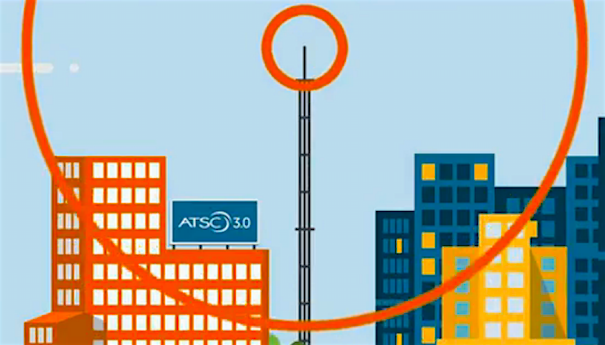WCRN Boston Launches First NextGen TV Platform in Boston
The LPTV station is using ATSC 3.0/NextGen TV to offer personalized content for viewers and unlimited encrypted datacasting services for businesses and first responders

BOSTON—WCRN TV 31 Boston is reporting that it has launched the region’s first ATSC 3.0/Next Gen TV platform and is using it to deliver more personalized content and to offer encrypted broadcast datacasting services to businesses and first responders.
NextGen TV/ATSC 3.0 standard is IP based. That allows ATSC 3.0-capable TVs to act like web browsers and creates new opportunities to deliver more personalized content, the low power station noted.
Using those capabilities, WCRN is initially using about half of its spectrum to offer four program channels to viewers in Boston: France 24, Retro TV, and Heartland TV, and Paranormal TV.
To access these benefits, viewers will need an ATSC 3.0 receiver, now available on all new Sony TV models or through a set top box such as one made by Silicon Dust.
The other half of its spectrum is being used for datacasting.
“NextGen TV is only one tool in the ATSC 3.0 tool chest,” said WCRN’s CEO “SuperFrank” Copsidas. “With IP Protocol, broadcasters can now deliver public or encrypted video, audio (including radio stations), and datacasting. A broadcaster’s ATSC 3.0 signal can now be divided into different delivery pipes, each with a unique IP delivery protocol for a particular use. It is a new alternative with unique qualities for multiple encrypted data delivery services, depending on the end user’s needs, be it a first responder, remote learning, signage, or a delivery truck.”
The station said it is also working with partners to develop technologies and possible use cases for ATSC 3.0.
The professional video industry's #1 source for news, trends and product and tech information. Sign up below.
On the technical side, Ateme, a global leader of video compression and delivery solutions, and Enensys Technologies are working together on a new product using WCRN for field testing, the station reported.
WCRN is also working with Hudson, Mass.-based West Pond Technologies, the industry leader in broadcast datacasting to develop use cases for the ATSC 3.0 signal. Those include applications for first responders, education, transferring data to delivery vehicles and updating digital signage.
“ We are excited to have this opportunity to partner with WCRN, field testing our innovative products and developing new uses in our home market of Boston,” said Steve Hastings, president of West Pond Technologies.
The deployment also highlights growing interest in ATSC 3.0 by LPTV stations.
Peter Saad, executive director of the LPTV (Local Power TV) Broadcasters’ Association, stated, “We are thrilled that WCRN in Boston is joining 10 other members of our Association in launching this cutting-edge technology. The broadcast business is transitioning from a programming delivery platform to a data delivery service, given ATSC 3.0’s IP platform. With internet data demand expected to double every year for the next five years, UHF Spectrum is beachfront property and there is only a limited amount available. It is currently the most undervalued asset in the data delivery space.”
TV Tech has been tracking all the deployments of NextGenTV/ATSC 3.0 around the country.
As of summer 2022, ATSC 3.0 is available in 68 markets reaching half of all U.S. homes according to the FCC. The commission also noted that at least one full-power TV station has been licensed to provide ATSC 3.0 services in 54 DMAs.
The full list of deployments can be found here.
George Winslow is the senior content producer for TV Tech. He has written about the television, media and technology industries for nearly 30 years for such publications as Broadcasting & Cable, Multichannel News and TV Tech. Over the years, he has edited a number of magazines, including Multichannel News International and World Screen, and moderated panels at such major industry events as NAB and MIP TV. He has published two books and dozens of encyclopedia articles on such subjects as the media, New York City history and economics.

